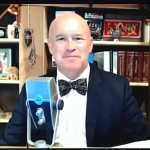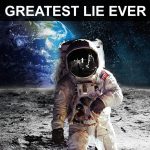ForbiddenKnowledgeTV
Alexandra Bruce
December 17, 2013
This detailed footage of Comet Ison swinging around the Sun 3 weeks ago above was captured by NASA’s STEREO (Solar Terrestrial Relations Observatory), and SOHO (the joint European Space Agency/NASA Solar and Heliospheric Observatory).
YouTube posts continue to rage about the imminent dangers posed by Ison and a “NASA cover-up” – and even the NASA report below is unclear as to whether the nucleus survived.
The hysteria generated by long-period comets, which are once-in-a-lifetime events and seem to cause more angst than comets with short periodicity, such as Comet Encke, which swings around the Sun every 3 year years. This is ironic because Encke has been blamed by two Royal astronomers, Bill Napier and Victor Clube for the Bronze Age collapse in 1600 BC and the fall of the Roman Empire in 536-7AD (from a mini “nuclear winter” that caused crop failures and mass famines, worldwide,
resulting from a cluster of mostly oceanic impacts, the most significant remains of which have been discovered underwater, north of the Australian Continent, in the Gulf of Carpentaria), among other “bad times,” such as the Greek myth about Phaeton, which was also recently determined to have caused a crater that created a lake in Chiemgau, Bavaria.
They describe Encke as a formerly a much larger object that has been continuously breaking up over our heads for several millennia. All of the above is corroborated, from studies by the Holocene Impact Working Group, headed up by Dr. Dallas Abbott from Columbia University.
===
NASA’s Public Statement About Comet ISON:
After several days of continued observations, scientists continue to work to determine and to understand the fate of Comet ISON: There’s no doubt that the comet shrank in size considerably as it rounded the sun and there’s no doubt that something made it out on the other side to shoot back into space. The question remains as to whether the bright spot seen moving away from the sun was simply debris, or whether a small nucleus of the original ball of ice was still there. Regardless, it is likely that it is now only dust.
Comet ISON, which began its journey from the Oort Cloud some 3 million years ago, made its closest approach to the sun on Nov. 28, 2013. The comet was visible in instruments on NASA’s Solar Terrestrial Relations Observatory, or STEREO, and the joint European Space Agency/NASA Solar and Heliospheric Observatory, or SOHO, via images called coronagraphs.
Coronagraphs block out the sun and a considerable distance around it, in order to better observe the dim structures in the sun’s atmosphere, the corona. As such, there was a period of several hours when the comet was obscured in these images, blocked from view along with the sun. During this period of time, NASA’s Solar Dynamics Observatory could not see the comet, leading many scientists to surmise that the comet had disintegrated completely. However, something did reappear in SOHO and STEREO coronagraphs some time later — though it was significantly less bright.
Whether that spot of light was merely a cloud of dust that once was a comet, or if it still had a nucleus — a small ball of its original, icy material — intact, is still unclear. It seems likely that as of Dec. 1, there was no nucleus left. By monitoring its changes in brightness over time, scientists can estimate whether there’s a nucleus or not, but our best chance at knowing for sure will be if the Hubble Space Telescope makes observations later in December 2013.
Regardless of its fate, Comet ISON did not disappoint researchers. Over the last year, observatories around the world and in space gathered one of the largest sets of comet observations of all time, which should provide fodder for study for years to come. The number of space-based, ground-based, and amateur observations were unprecedented, with twelve NASA space-based assets observing over the past year.
This video is public domain and can be downloaded at: http://svs.gsfc.nasa.gov/goto?11422
Like our videos? Subscribe to NASA’s Goddard Shorts HD podcast:
Or find NASA Goddard Space Flight Center on Facebook:
Or find us on Twitter:









Add comment